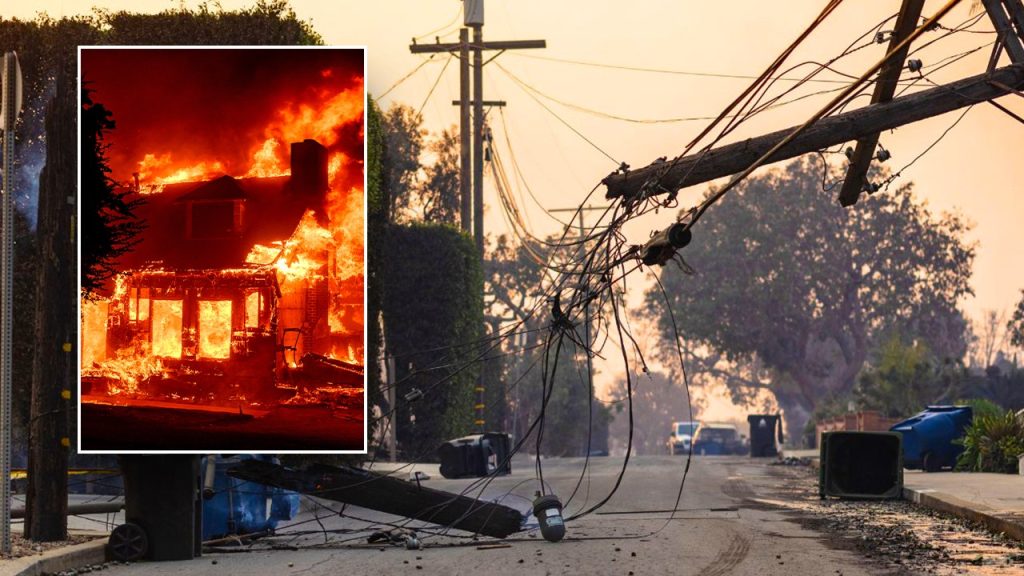Whisker Labs, a company specializing in monitoring electrical activity, has reported a dramatic surge in power grid faults in Los Angeles, coinciding geographically with the origins of three major wildfires: the Eaton, Palisades, and Hurst Fires. These faults, detected by Whisker Labs’ network of approximately 14,000 “ting” sensors, are indicative of electrical disruptions, often caused by vegetation contacting power lines, malfunctioning equipment, or excessive strain on the grid. While correlation doesn’t equate to causation, the timing and location of these faults raise serious questions about their potential role in igniting the devastating blazes.
The data reveals a stark contrast between normal grid activity and the period preceding the fires. In the area of the Palisades Fire, the most extensive of the three, Whisker Labs recorded 63 faults in the two to three hours leading up to the ignition, followed by another 18 faults within the first hour of the fire. The Eaton Fire near Altadena saw a staggering 317 faults prior to ignition, while the Hurst Fire had approximately 230. These numbers dwarf the typical daily fault count, suggesting a significant anomaly in grid behavior. While Whisker Labs emphasizes that their data does not definitively link the faults to the fires’ ignition, the sheer volume of these disturbances in the immediate vicinity of the fire origins warrants thorough investigation.
The mechanics of a fault-ignited fire are relatively straightforward. When a fault occurs, sparks can shower down onto dry vegetation, essentially acting as a match. Coupled with the intense Santa Ana winds prevalent during the fires’ outbreak, these small ignitions can rapidly escalate into uncontrollable infernos. This underlines the critical importance of robust grid monitoring and preventative measures, especially in fire-prone areas during high-wind events.
Although Whisker Labs has engaged in discussions with utility companies regarding the potential use of their data for preventative purposes, this information isn’t currently being shared for grid management. The company’s focus is primarily on protecting individual homes from power surge damage and potential fires. The “ting” sensors alert homeowners via an app when a surge is detected, enabling them to take preventative action, such as contacting an electrician. This proactive approach, according to Whisker Labs, can prevent up to 80% of potential house fires caused by electrical surges.
The Los Angeles Department of Water and Power (LADWP), unlike other major Californian utility companies, did not proactively shut down power lines in the affected areas prior to the fires, despite the elevated risk posed by the high winds. While the LADWP claims to have alternative safety measures in place, such as disabling automatic power restoration after an outage, the absence of preventative power shutoffs raises concerns about their preparedness and adherence to best practices in wildfire prevention. This stands in contrast to other utility companies that have adopted preventative power shutoffs as a critical mitigation strategy, especially after past incidents where utility equipment was implicated in wildfire ignitions.
The “ting” sensor technology employed by Whisker Labs represents a significant advancement in real-time grid monitoring. By continuously analyzing millions of electrical measurements per second, the sensors, combined with artificial intelligence and cloud computing, can pinpoint faults with remarkable precision. Crucially, the network can differentiate between faults localized within a single home and those impacting the broader grid, providing granular insights into the health and stability of the electrical infrastructure. This detailed information has the potential to be a game-changer in wildfire prevention, enabling more proactive and targeted responses to emerging grid threats before they escalate into catastrophic fires. While the cause of the Los Angeles wildfires remains under investigation, the data provided by Whisker Labs underscores the importance of integrating advanced grid monitoring technologies into wildfire prevention strategies.










